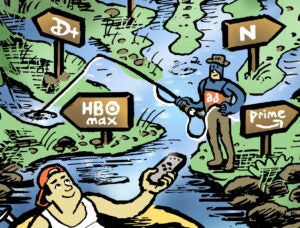 “Data-Driven Thinking” is written by members of the media community and contains fresh ideas on the digital revolution in media.
“Data-Driven Thinking” is written by members of the media community and contains fresh ideas on the digital revolution in media.
Today’s column is written by Andrew Arnold, senior director of marketplace quality at The Trade Desk.
The plague of invalid traffic (IVT) is well documented across the industry, particularly in recent weeks with the discovery of the Methbot operation.
Buyers, sellers and ad tech vendors in the digital media ecosystem face a problem that not only costs us billions of dollars per year, but also strikes directly at the free market’s most precious resource: trust.
How do we safeguard trust and clean out the bad guys from ad tech’s ecosystem?
IVT: The Good And The Bad
Broadly speaking, IVT can be broken into two categories: legitimate and illegitimate.
Legitimate IVT is a catchall for activity occurring during normal internet maintenance, such as data center traffic, search engine spiders, app data, brand safety bots and analytics tools. Despite this traffic being considered invalid and nonhuman, these are the good bots. Legitimate IVT help improve the ecosystem by improving search accuracy or running site maintenance.
Conversely, illegitimate IVT is traffic that generates ad-related actions to earn money from the digital advertising ecosystem without the presence of an actual human audience. When we speak about IVT, it’s mostly in reference to this second category. It includes several types of illicit behavior, such as hijacked devices, a widespread problem with serious cybersecurity implications; cookie stuffing, a form of IVT that robbed eBay of $28 million in a single attack; manipulation of location data; click fraud; and spoof domains.
Often these different types of IVT can get grouped together, so it’s important that buyers are able to distinguish the different types of IVT so they can pinpoint what needs blocking. An advertiser may, for example, see a certain percentage of IVT coming from a premium website, but to respond effectively they’ll need to know if the cause is hijacked devices visiting that site or a spoofed domain.
In total, the various forms of IVT represent a sizable problem. According to the IAB, 9.6% of all traffic should be flagged as invalid, with the problem somewhat more pronounced in mobile (10%) and video (11.4%). Even more alarming, the bad actors are growing more sophisticated in their tactics. What is often called sophisticated IVT relies on hijacked devices, hijacked tags, malware and botnets that have popped up in recent years.
Practical Responses
One common misconception among ad buyers is that media properties are the only beneficiaries of IVT. This is not always the case, but the misunderstanding speaks to the larger need for education in this area. Not only do buyers need to understand what constitutes IVT, they need to know where the vulnerabilities in the media supply chain are likely to occur.
Education and aggressive defensive tactics will only go so far. IVT is a monetary crime, so it’s critical to look for financial disincentives. Right now, advertisers shoulder the costs of IVT. Bad actors thrive on the acquiescence of advertisers that until recently saw IVT as the cost of doing business.
That attitude is shifting. Larger advertisers have begun using their clout to demand refunds on IVT. As the rest of the market follows their lead, we will begin to see a systemic and powerful response to the problem. Eventually, as the payout for IVT shrinks, its appeal will diminish.
A Sustainable Framework For Response
While this may be difficult to accept, we need to be mindful that no matter how vigilant we are or robust our defenses, some IVT will always be with us. Even more alarming, when the money supply to the bad actors who deal in IVT is cut off, there’s a strong likelihood that they will look for other ways to perpetrate financial crimes against the digital advertising ecosystem.
In much the same way that law enforcement seeks to minimize crime and provide resources that reduce the likelihood of anyone becoming a victim, ad tech needs to adopt a realistic framework for combating issues like IVT. Law enforcement does not tolerate crime, but it expects criminal activity. Following that lead, we should expect IVT and that criminals will continue growing more sophisticated in their tactics, but as an industry ad tech needs to devise new ways to automate the detection and removal of IVT so bad actors don’t get paid.
This may cause some short-term revenue challenges for publishers, SSPs and DSPs but the end state is much more lucrative for all parties involved, especially the advertisers and their agencies, which spend billions of dollars a year on digital. OpenRTB, the Trustworthy Accountability Group and other organizations have the potential to accomplish much of this, but recent events prove that we need more adoption and participation from member companies of both organizations.
Follow The Trade Desk (@TheTradeDeskInc) and AdExchanger (@adexchanger) on Twitter.













